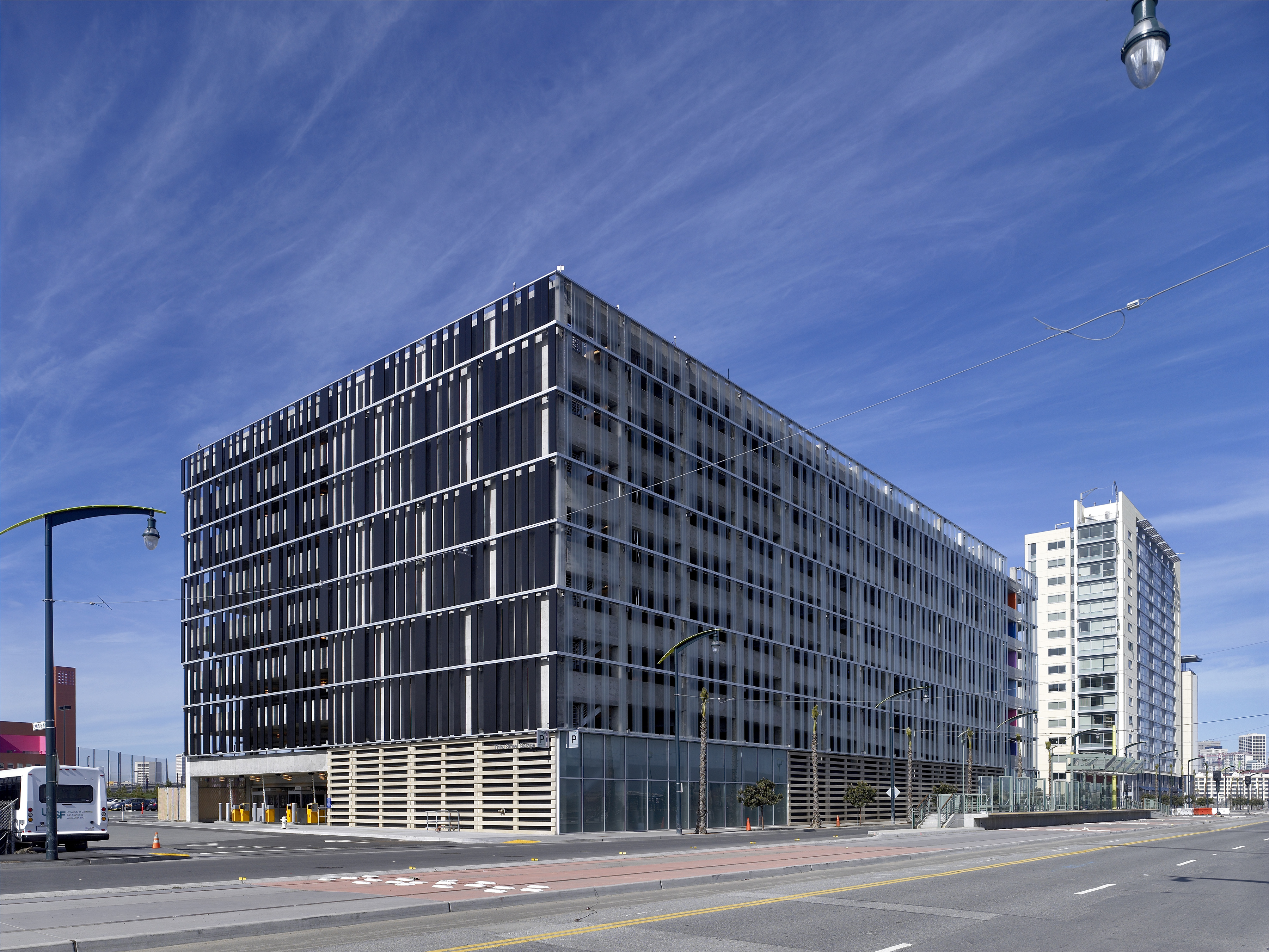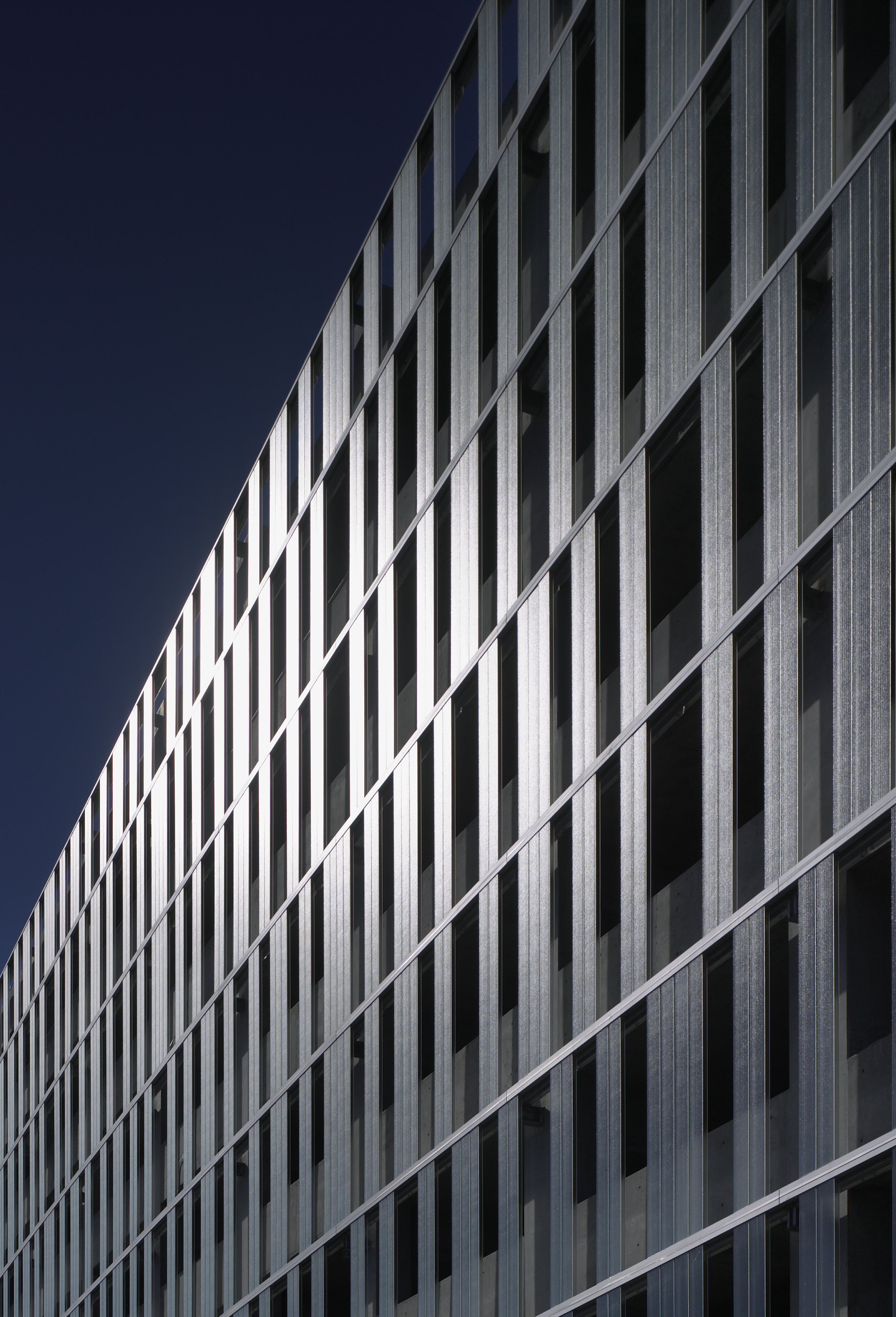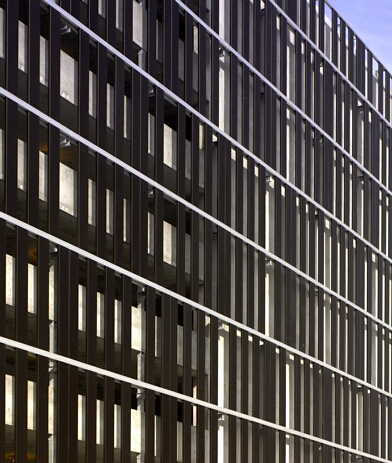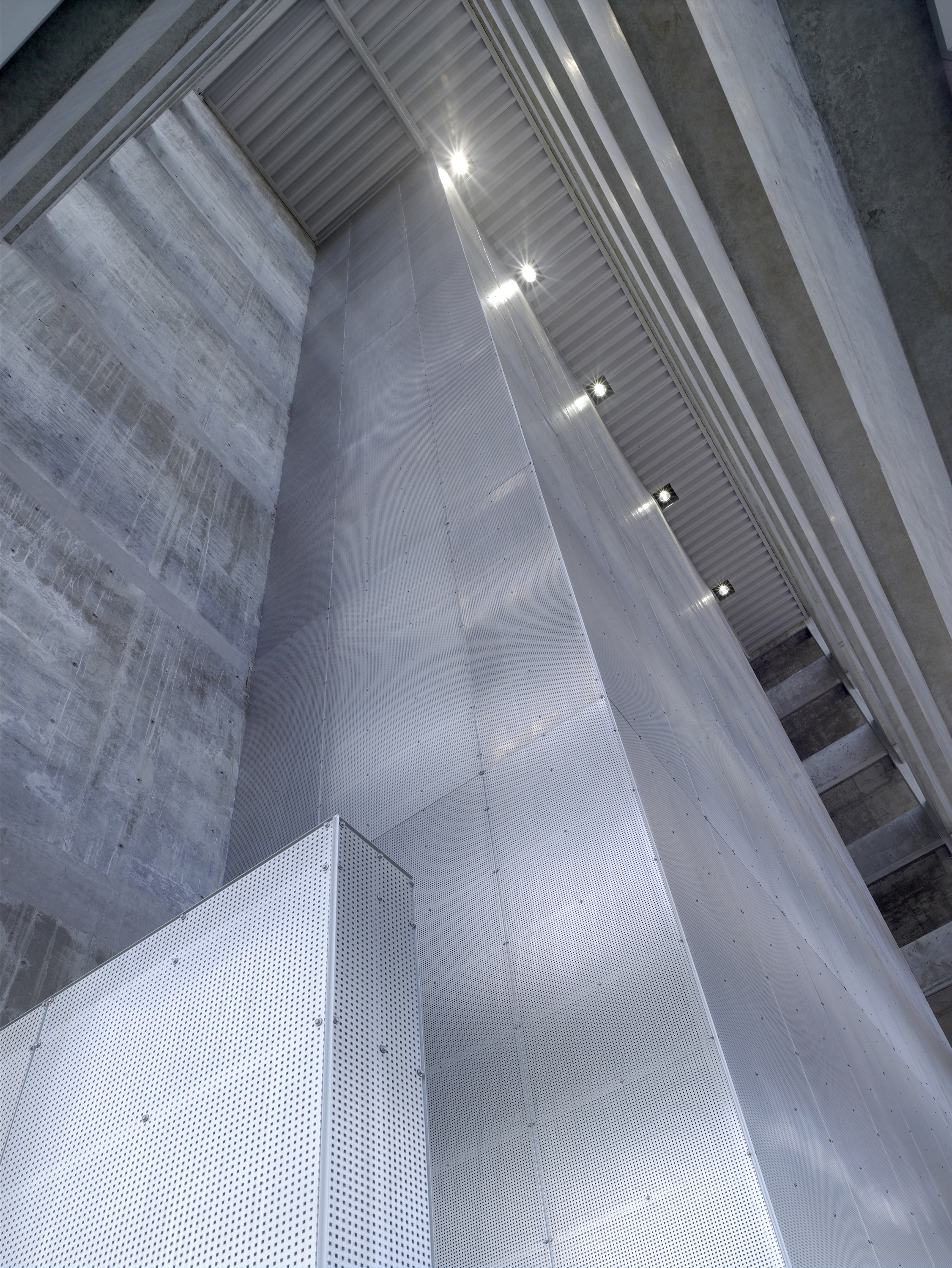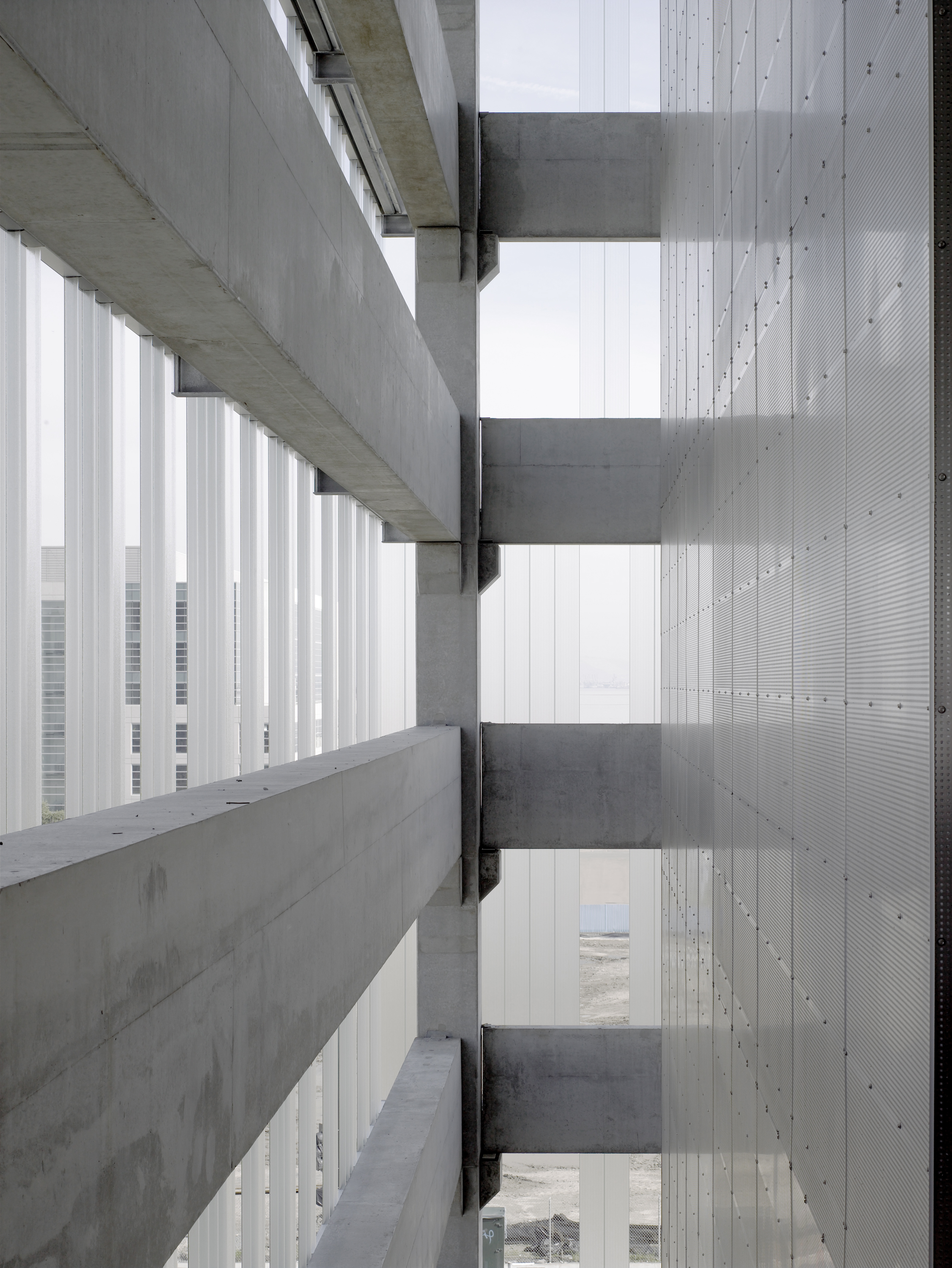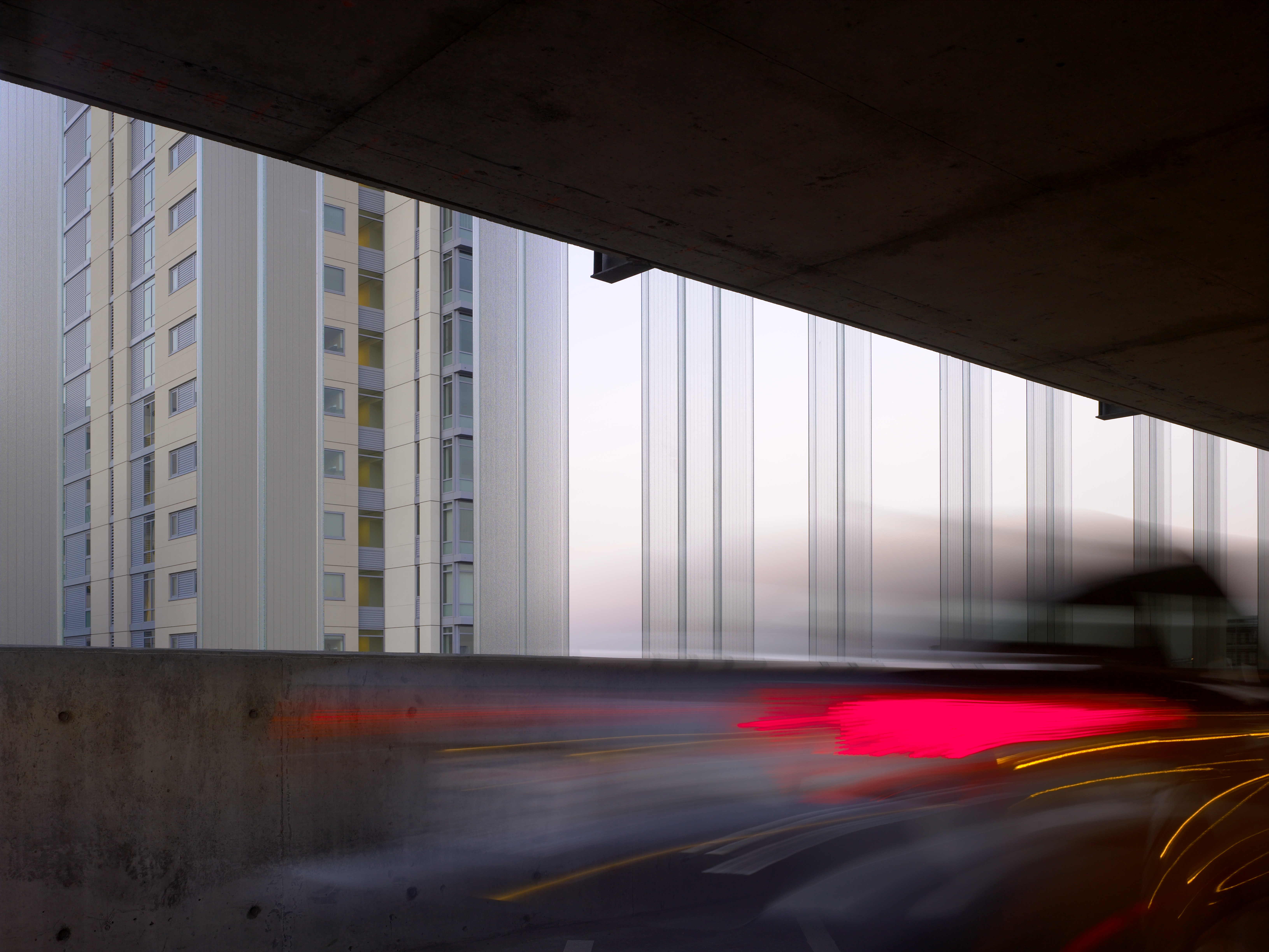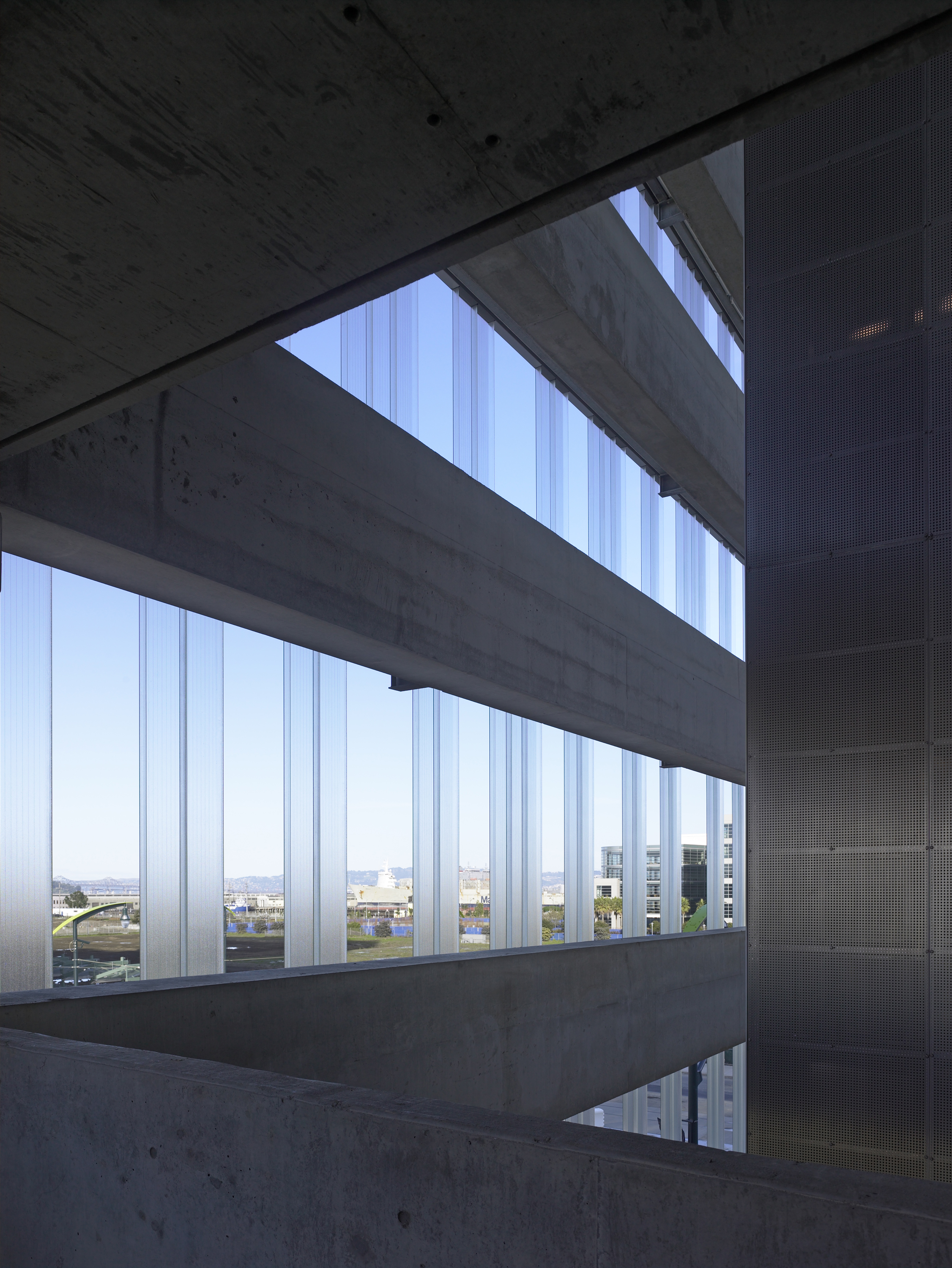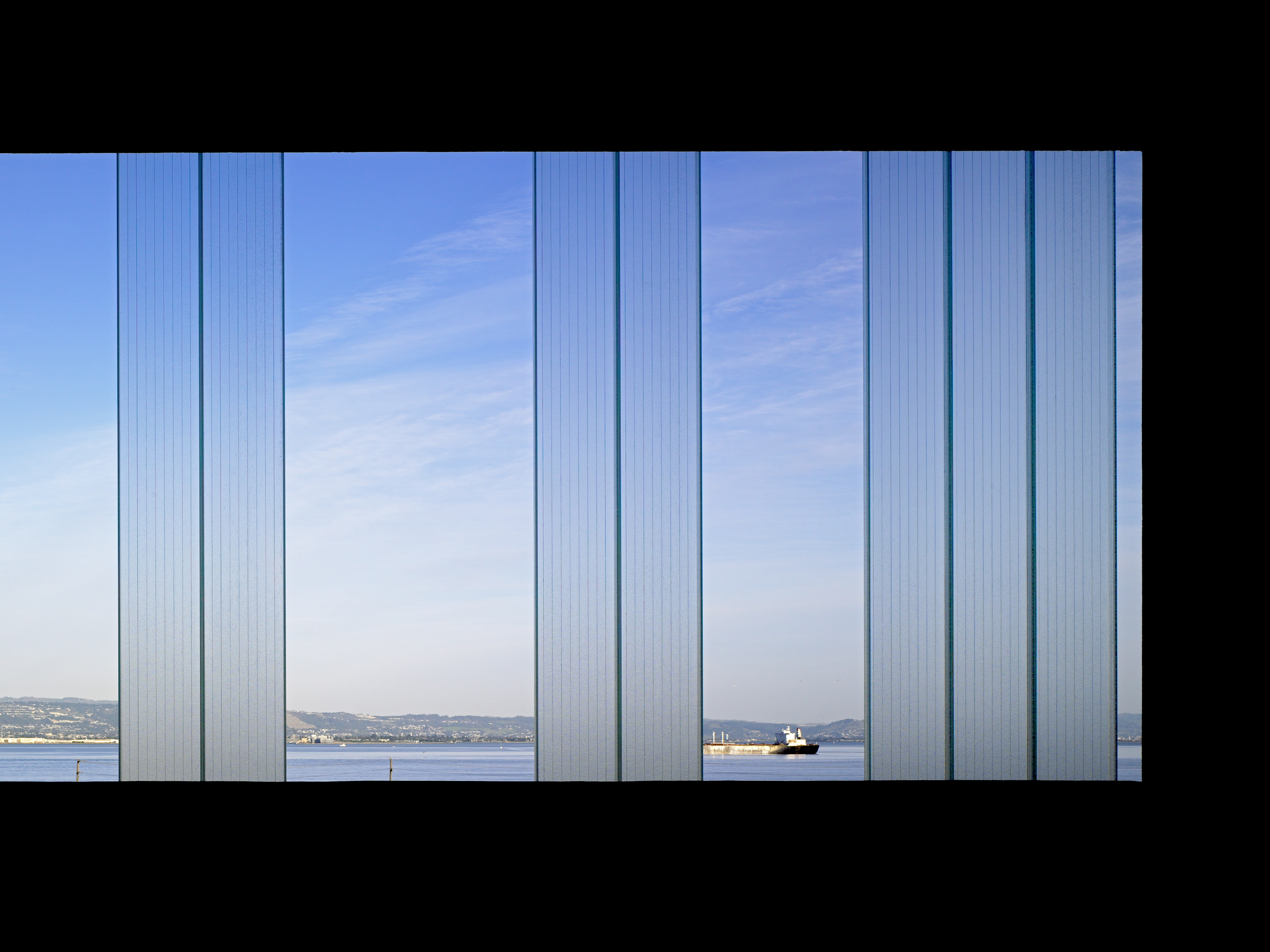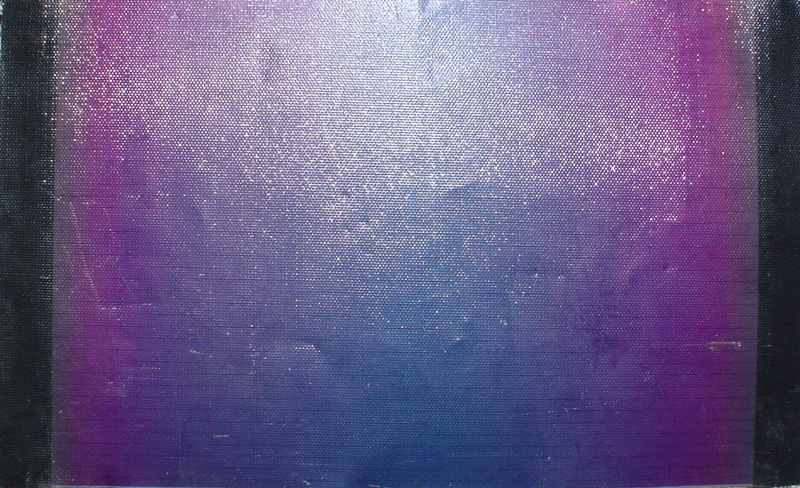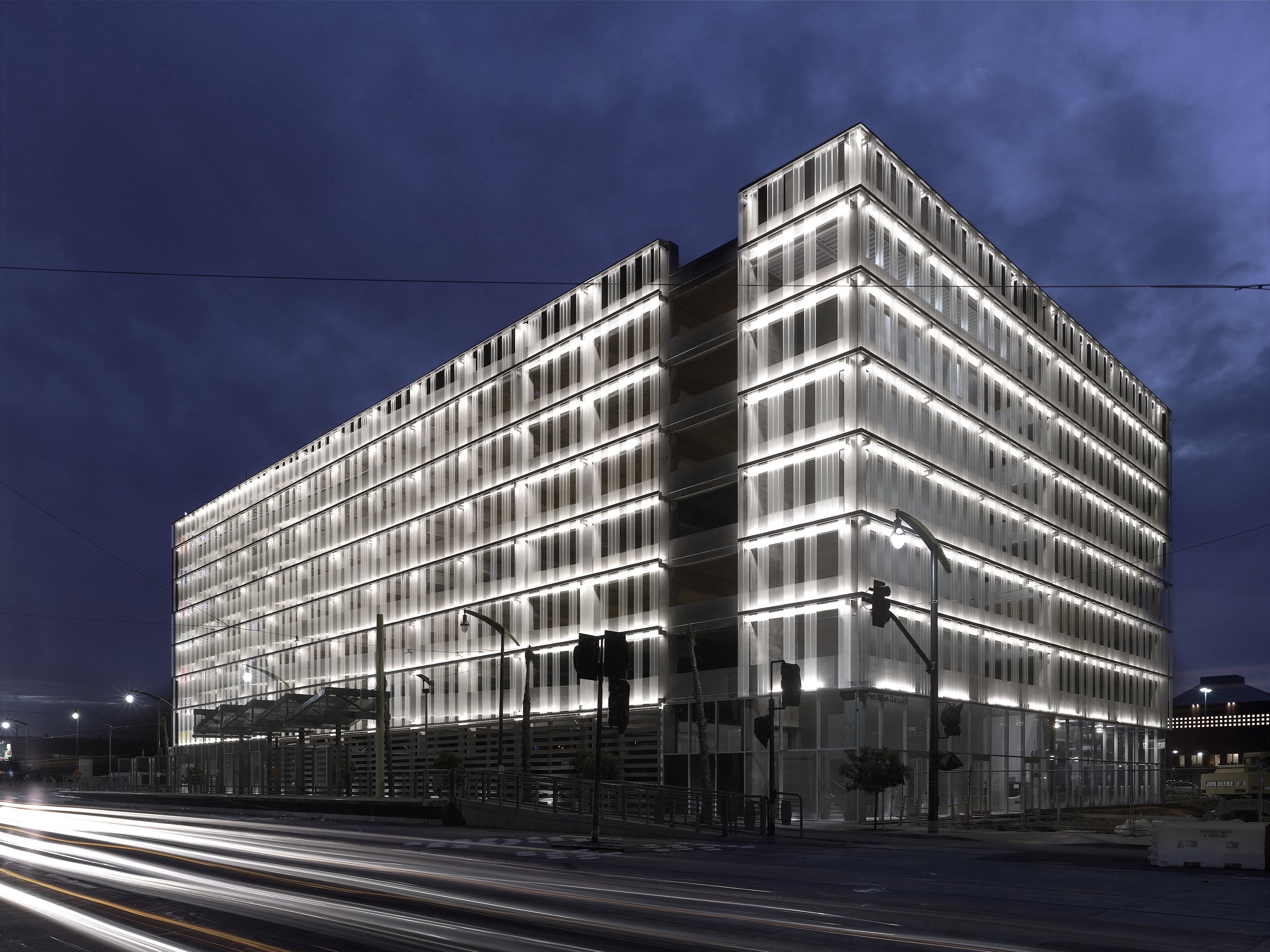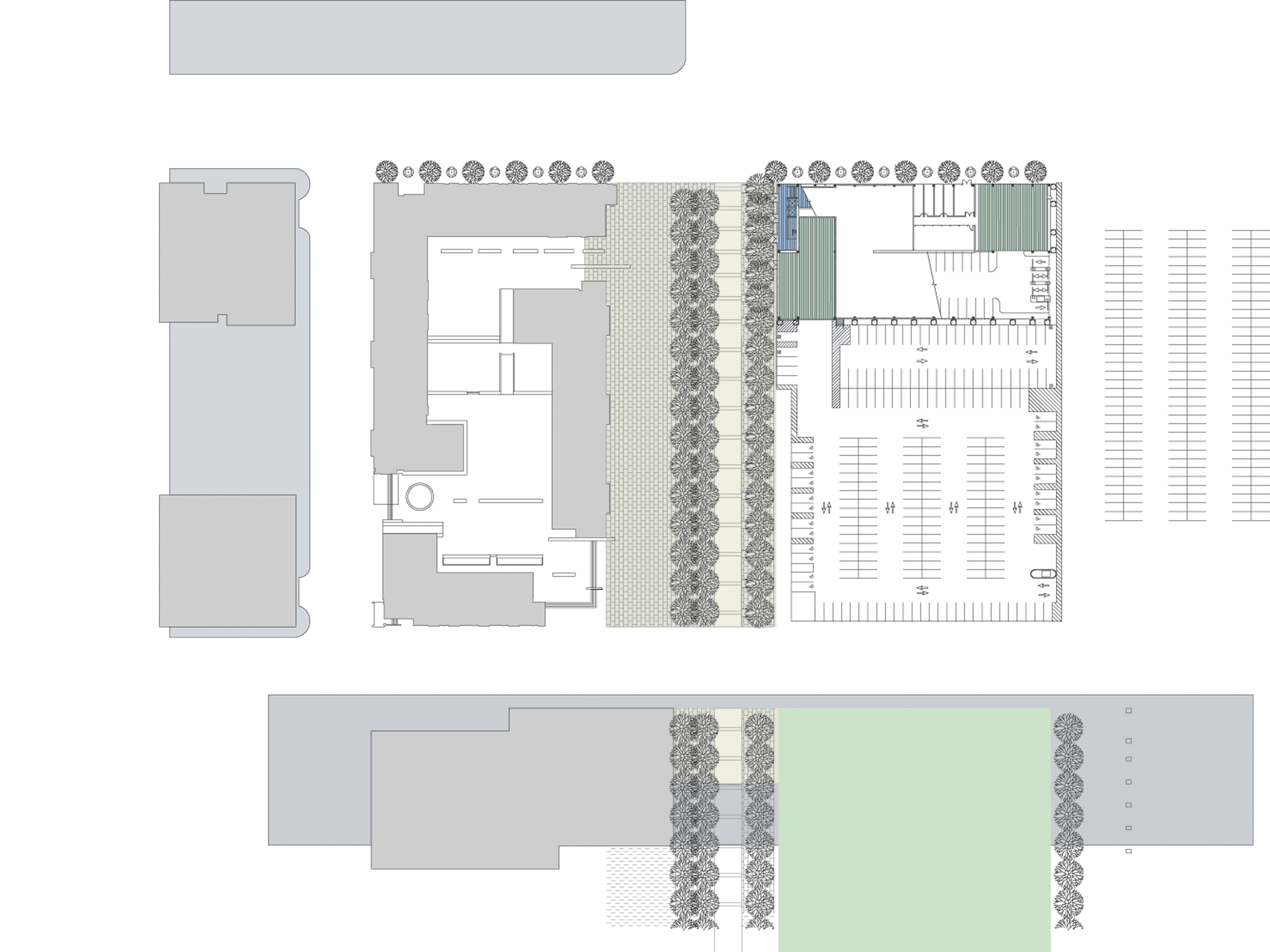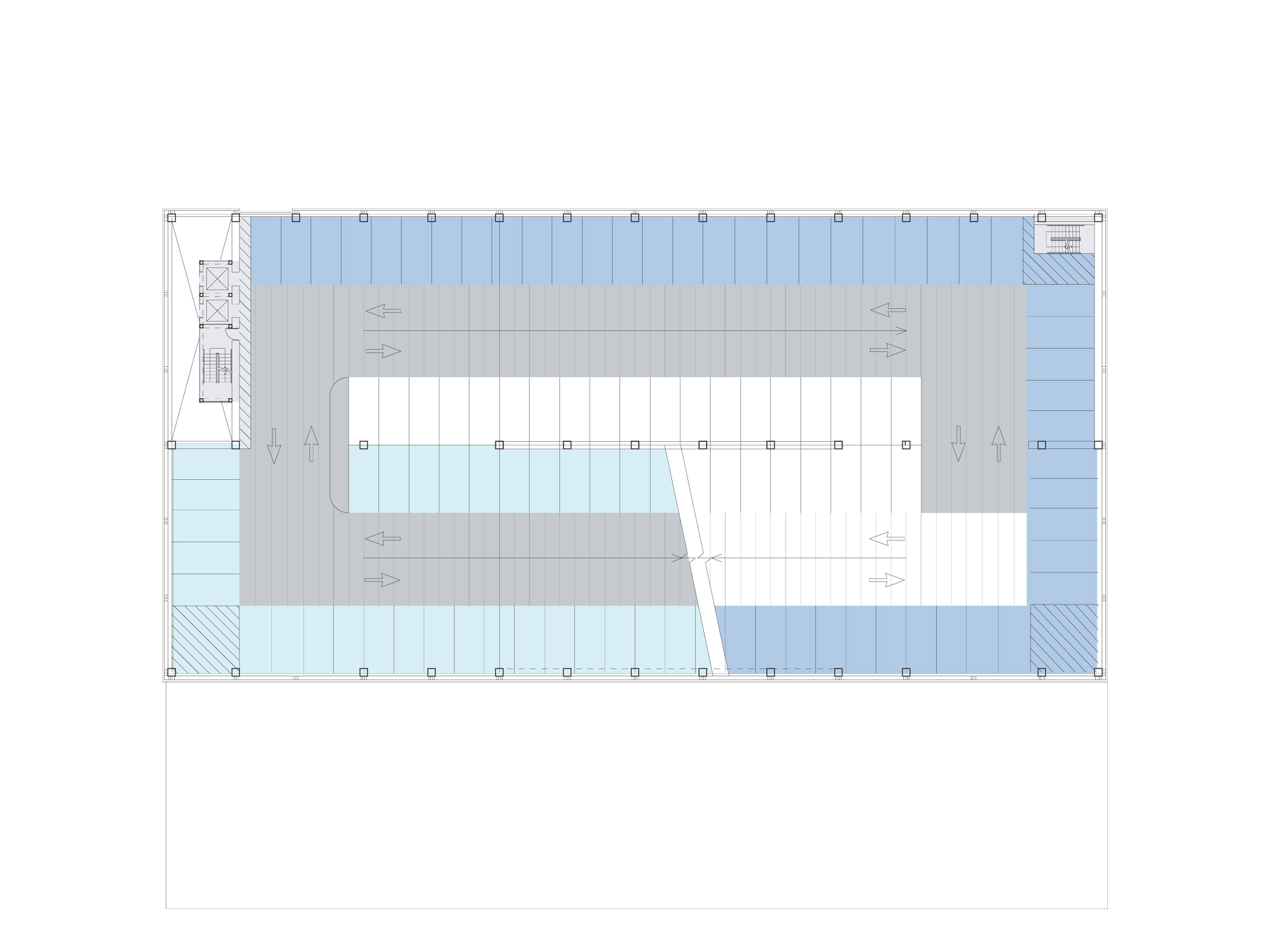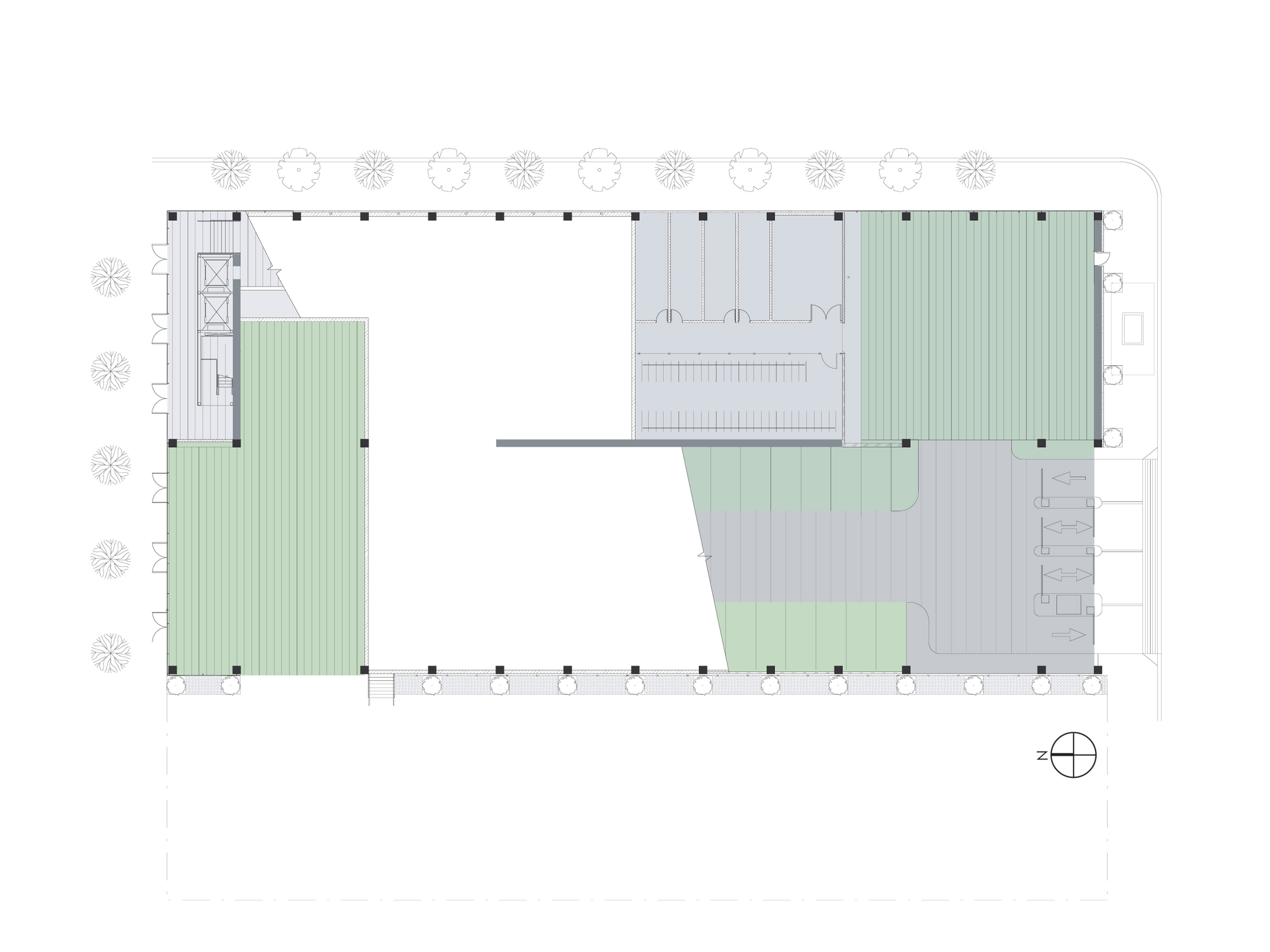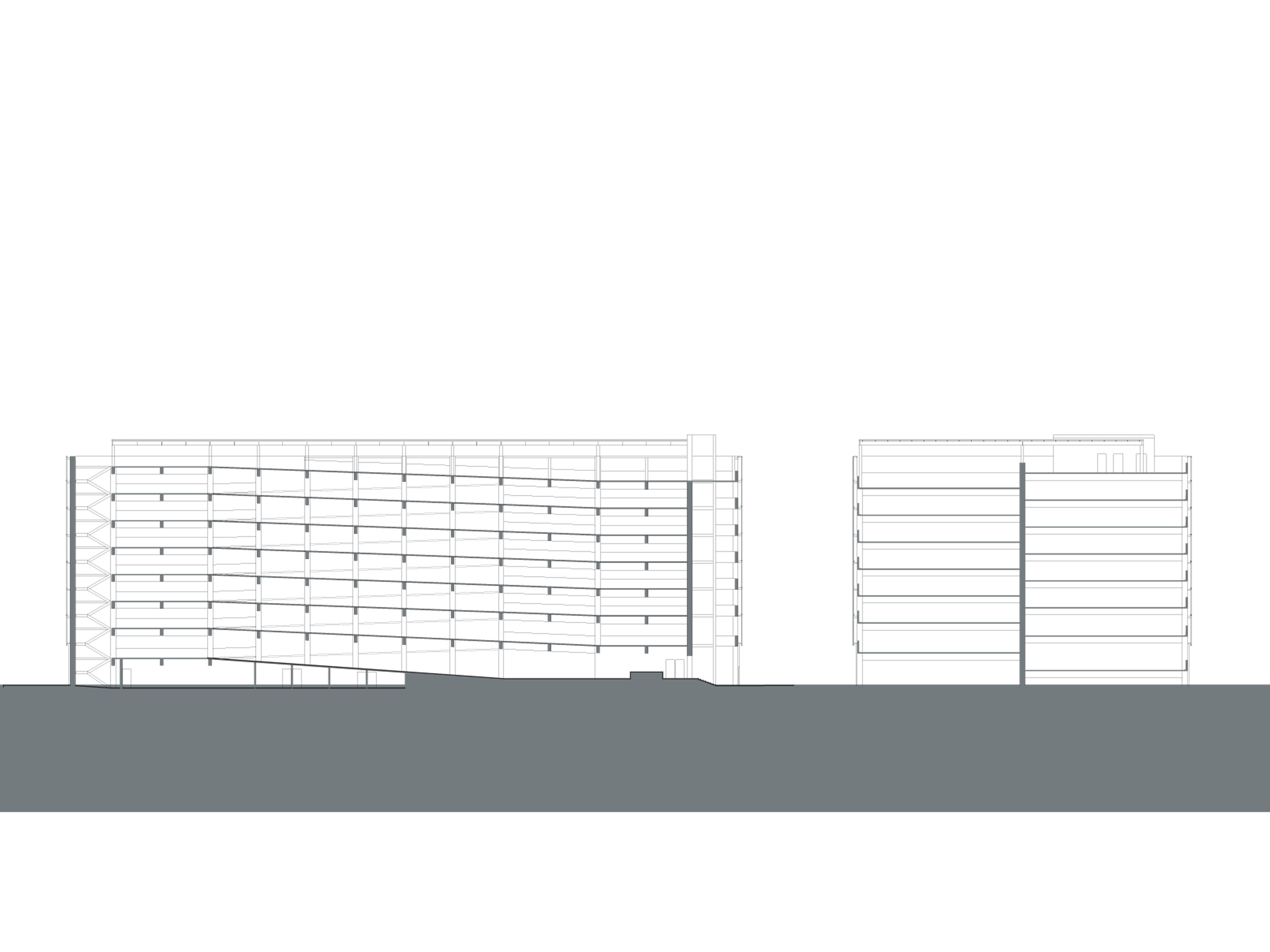San Francisco, CA
This building is a gateway for the new UCSF Biotech Campus in Mission Bay.
Our knowledge of nature has evolved from the scale of mechanics to the intricacies of the molecular. More subtle and complex forms of mapping biology have changed our understanding of the nature of nature. The DNA barcodes are fingerprints of human genomes. It is this contemporary conception of order which the building expresses.
Panels of translucent channel glass are arranged in patterns with open voids. This gives this gateway parking structure to the Biotech Campus a distinctive and memorable image. The glass has a stippled surface which radiates light, providing a shimmering veil to the concrete parking structure within. At night, the channel glass is illuminated from within to provide a glowing image. On the south façade, using the same patterns, photovoltaic panels provide energy for the building. A trellis on the roof also has photovoltaic panels which generate sufficient energy for the building’s use.
When completed this building was the largest pv installation in the UC system.
At the ground level, the building provides two retail spaces. Along Third Street, travertine colored concrete slats emphasize the base.
Experientially, as point of entry and front door to the campus, moving through this airy glass structure will be walking through a box of light. The elevators in the north east corner are boldly coded with color and number, and connect to the plaza via a dramatic lobby, shrouded by channel glass, and open the full eighty five foot height of the structure.
This project is entirely about surface, a skin which provides an image independent of and protected from the buildings function. It is about presence rather than essence, about an unblemished skin. Paul Valery claimed ‘ the skin is the deepest’. This building intensifies the surface.
This 880 car parking structure is a gateway to the new UCSF Mission Bay Campus on Third Street. Wrapped in a dna barcode patterned channel-glass screen, it will glisten in the day, and radiate at night, becoming a beacon for the campus. The roof trellis and south façade are photovoltaic panels that produce the building’s energy.

